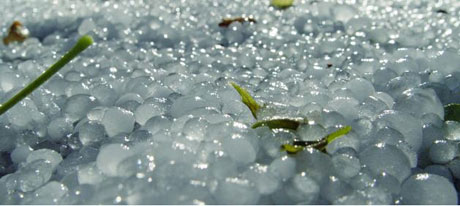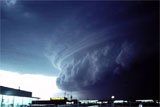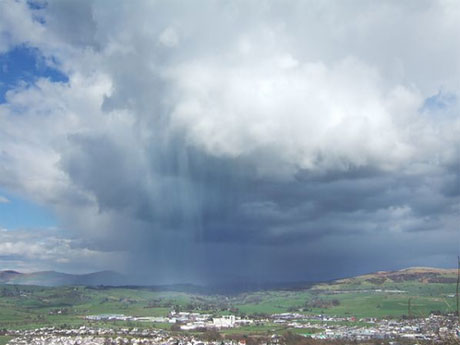How are hailstones formed?

Hailstones are formed from subcooled water that freezes to form ice around initial nuclei in the lower levels of storm clouds or inside a storm cell.

It is necessary for these nuclei to be relatively small in numbers so that a sufficiently large quantity of water is available to each one to enable rapid growth.
As the clouds contain large quantities of water, the latent heat produced via phase conversion results in a significant degree of instability of the temperature layers within the cloud.

The resulting updrafts can reach 20 to 30 m/s and represent another important factor for hailstone formation, as the freezing processes always result in a continuous increase in particle mass.
Without an updraft the particles would descend due to gravity, drop out of the cloud and grow no further.

The intensity of an updraft in a cloud can vary, causing particles to pass through a cycle.
First, they are drawn upwards by the updraft, only to fall back into lower air levels where they gather more water. They are then drawn upwards again where the additional water freezes.
This cycle is repeated until the hailstone is too heavy for the updraft to carry. It is therefore possible to judge the strength of an updraft inside a storm cloud from the size of the hailstone and, conversely, to forecast the diameter of hailstones based on the speed of the updraft.

The step-by-step formation of hailstones is visible from the individual layers that make up a hailstone.
Bright, translucent layers indicate a very water-rich environment with fast freezing, whilst cloudy or opaque layers indicate a low water content. The opaque appearance is caused by the inclusion of countless tiny air pockets.
Once the hailstone is heavy enough and drops out of the updraft, its size coupled with a temperature of usually less than 0°C do not allow it to melt.
Source: Wikipedia






